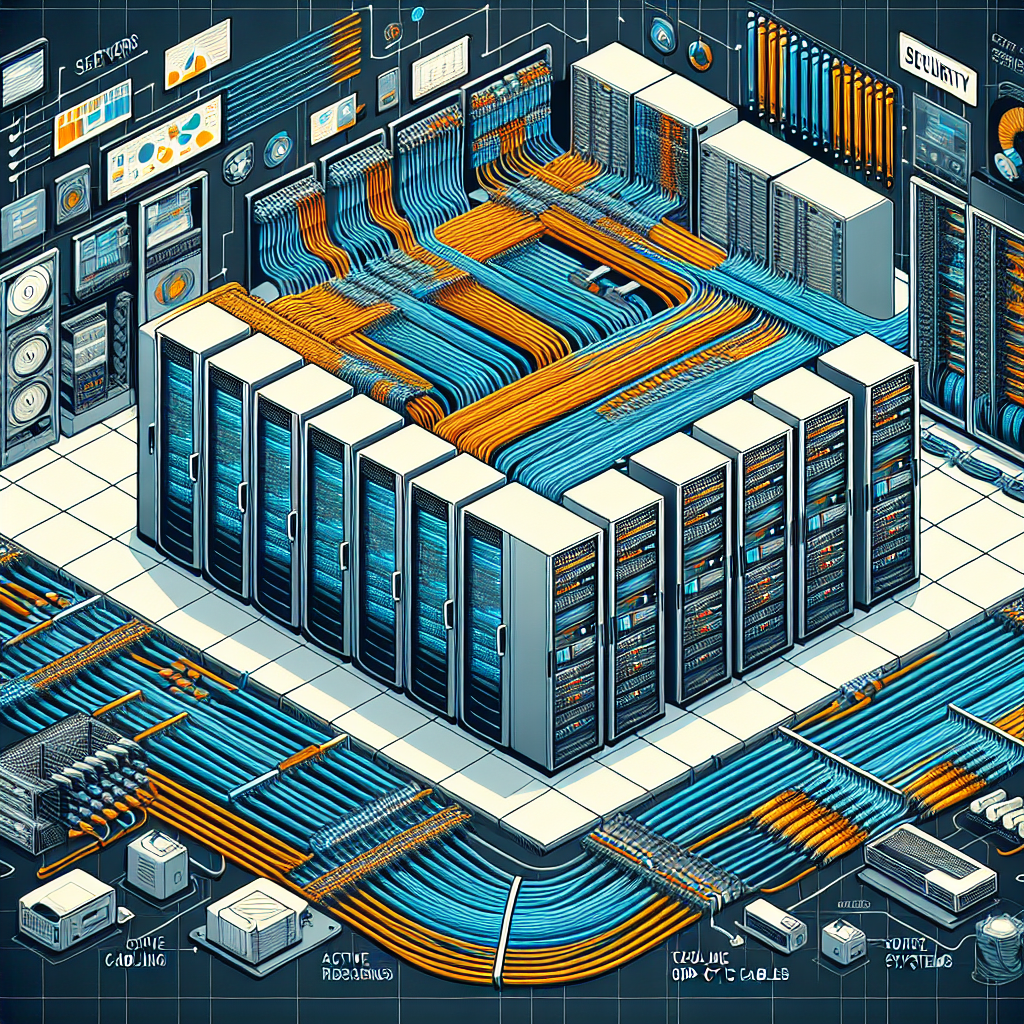In today’s digital age, data centers play a crucial role in storing and processing vast amounts of information for businesses and organizations. With the increasing demand for high-speed data transmission and reliable connectivity, the cabling infrastructure in a data center is more important than ever. Proper cabling practices are essential to ensure the reliability and performance of the entire network.
Here are some best practices for data center cabling that can help businesses achieve optimal performance and avoid potential issues:
1. Plan and design the cabling infrastructure: Before installing any cables, it is important to carefully plan and design the cabling infrastructure. This includes determining the layout of the data center, considering the distance between devices, and anticipating future growth and expansion. A well-thought-out cabling plan can help prevent cable congestion, reduce signal interference, and facilitate easier maintenance and troubleshooting.
2. Use high-quality cables and components: The quality of cables and components used in the data center can have a significant impact on performance and reliability. It is important to invest in high-quality cables that meet industry standards for bandwidth and transmission speed. Additionally, using reliable connectors, patch panels, and cable management tools can help ensure a secure and stable connection.
3. Follow cable management best practices: Proper cable management is essential for maintaining a neat and organized data center environment. This includes labeling cables, using cable trays and racks to route cables neatly, and avoiding cable tangles and knots. Well-organized cables not only improve the aesthetic appeal of the data center but also make it easier to identify and troubleshoot issues when they arise.
4. Consider the airflow and cooling requirements: Proper airflow and cooling are crucial for maintaining the temperature and humidity levels in a data center. When installing cables, it is important to consider the airflow requirements of networking equipment and ensure that cables do not obstruct air vents or cooling systems. This can help prevent overheating and ensure optimal performance of the entire network infrastructure.
5. Regularly inspect and maintain cables: Regular inspections and maintenance of cables are essential to prevent potential issues such as cable damage, signal loss, and connectivity problems. It is recommended to conduct routine cable testing and inspections to identify any issues and address them promptly. Additionally, replacing old or damaged cables can help prevent performance degradation and ensure the reliability of the data center network.
By following these best practices for data center cabling, businesses can ensure the reliability and performance of their network infrastructure. Investing in high-quality cables, proper cable management, and regular maintenance can help businesses avoid costly downtime and performance issues, ultimately leading to a more efficient and productive data center environment.


Leave a Reply